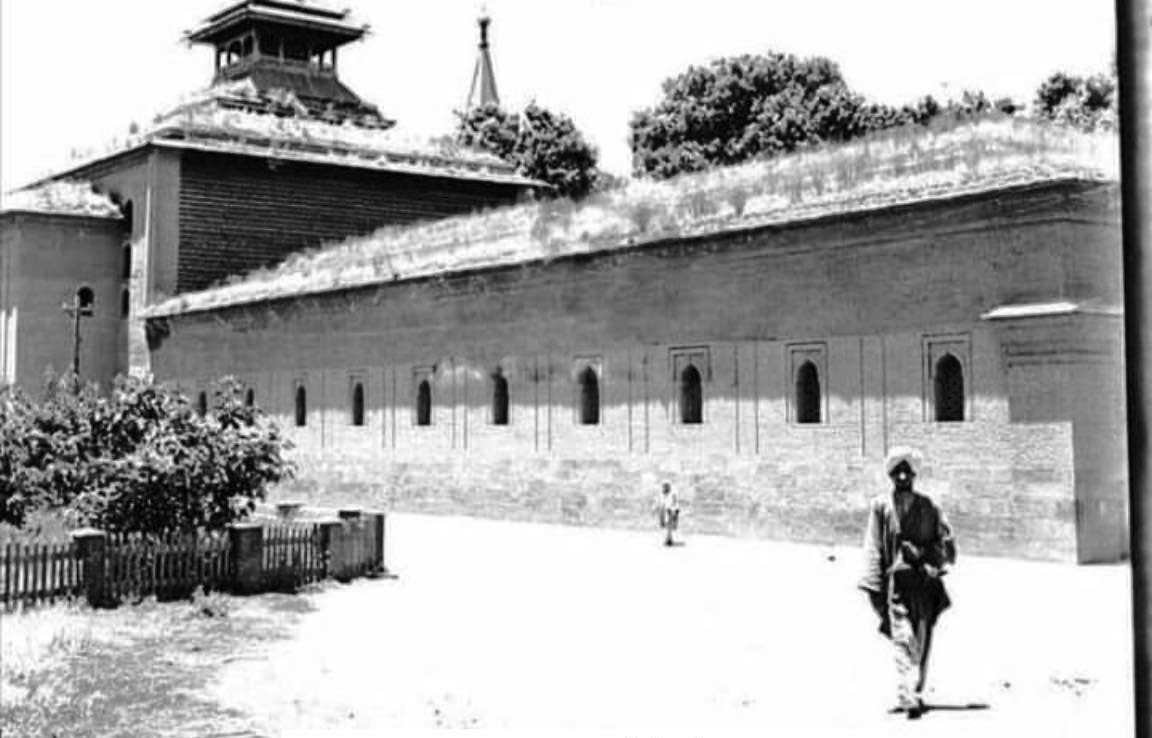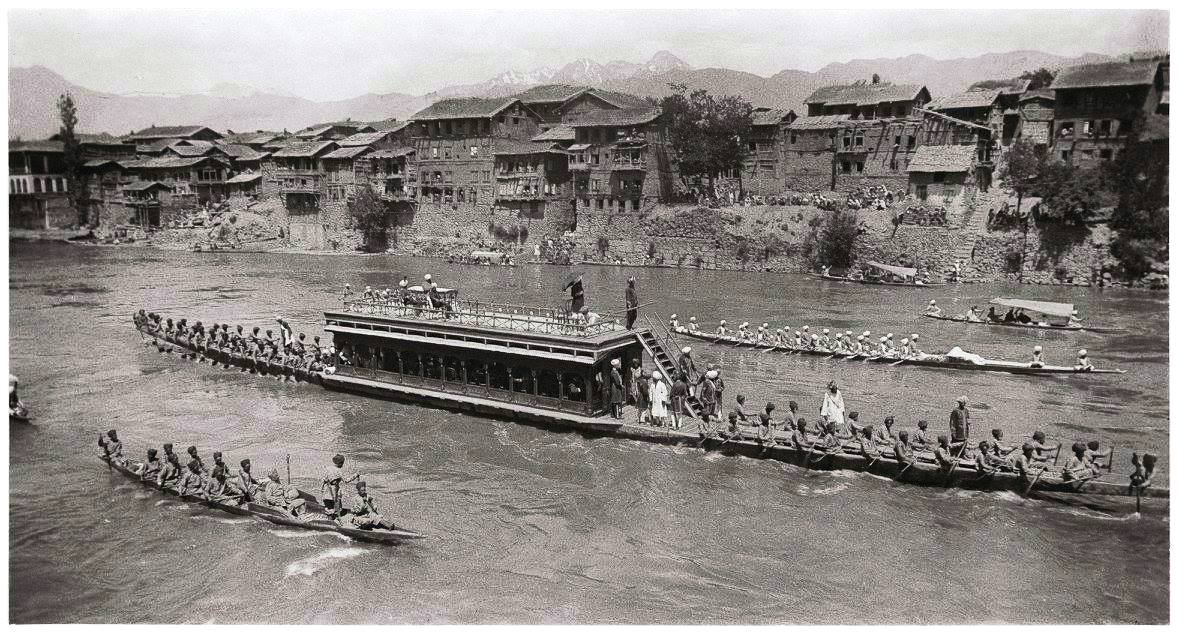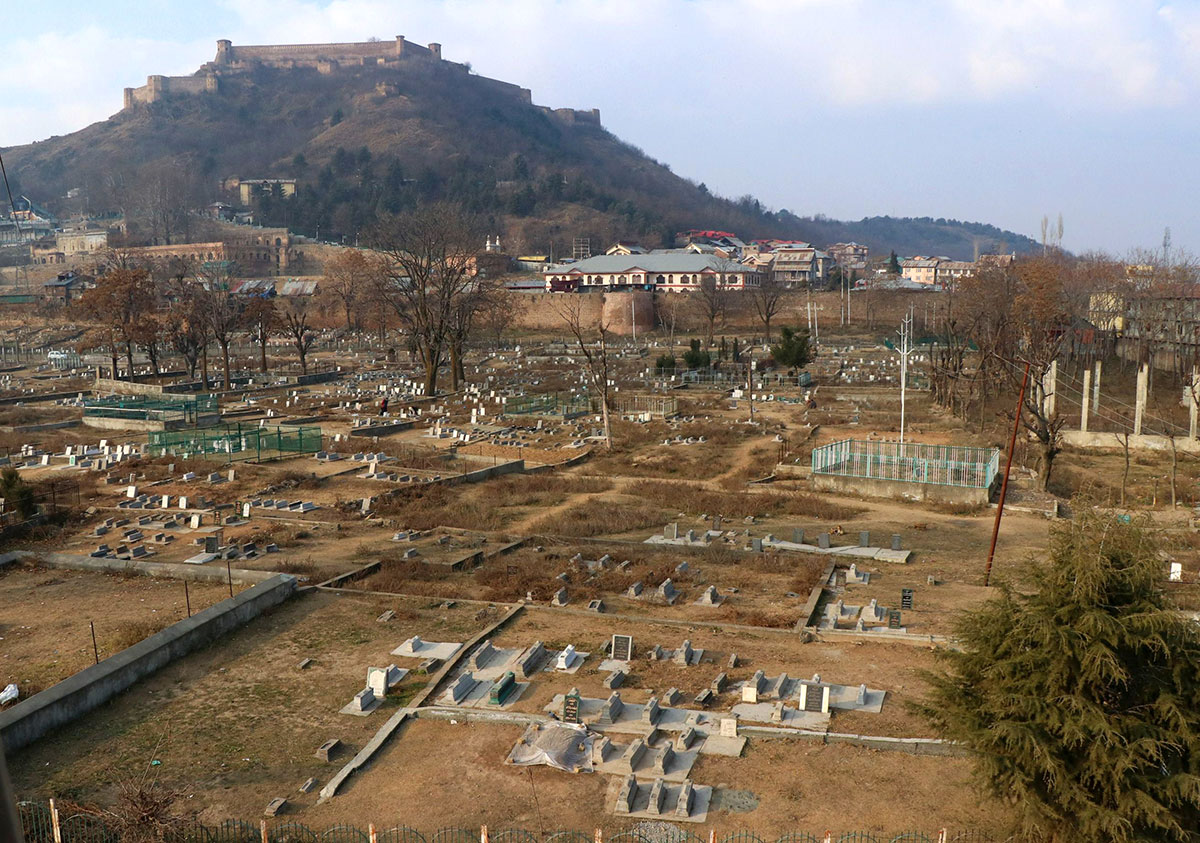Father of freedom movement leader Sauddin Shawl, Khawaja Sanaullah Shawl was one of the most respected traders of his era with a chain of outlets in the region. A philanthropist, he was a friend of the Afghan ruler and was hugely respected by the rulers back home, writes MJ Aslam

It is no exaggeration to that Khwaja Sanaullah Shawl of Khanyar, popularly known as Son e Shale, was the wealthiest merchant and landlord of nineteenth-century Kashmir. To date, Kashmiris in their mutual conversations invoke his name, Son e Shale, more as a taunt and jeer. “Zan Chu Su Son e Shale” (as if he is Son e Shale of yore), is the routine reference.
Like well-known Muslim scholar of Srinagar of his time, named, Mulla Inayat Ullah Shawl Ganai [died November 22, 1805), Khwaja Sanaullah Shawl was also a descendant of the Ganai family.
The Ganais’
Ganai is etymologically a respectable caste, a clan that has produced men of distinction who are revered for their piety, scholarship and contribution even after their demises centuries before. They included Baba Usman Uchap Ganai (contemporary of Sheikh Nooruddin Noorani), Sheikh Yaqoob Sarfi, Sheikh Baba Dawood Khaki, Haji Mulla Feroz Ganai, Mulla Mohsin Fani Ganai, Sheikh Ahmad Tarbali and many others. Sheikh Abdul Wahab Noori of Ihshan Sahib, Zaina Kadal, Srinagar where the shrine of Sheikh Yaqoob Sarfi is situated, also came from the same Ganai clan of Kashmir.
It is said that ancestors of the Ganai clan came from four lines of Hazrat Asim Bin Umari Farooq, Mughals and Pathans, local converted Brahman and other non-Brahman castes of Kashmir and butchers (Kasab).

Ganai’s in Kashmiri means Munshi. The members of this clan were pious, God-fearing people. It is further recorded that the ancestor of the fourth category of Ganais was Hilmat Ganai who had started the work of butchery of sheep centuries before and that all butchers of Kashmir are his descendants. But, it seems to be a weak tradition as outside Kashmir, almost all Ganai’s (butchers) are from Qureshi, Qadri, and Chisti castes.
Persian chroniclers have devoted books to mention mendicants (Majzoob) of medieval Kashmir. The men of eminence who have contributed on social, educational and economic fronts have been totally ignored by the chroniclers. Very scant references about those proud sons of the soil are to be found in the Persian history books. The same trend was continued by later Urdu and English writers of Kashmir who after 1947 devoted more to the men of art and music, and poetry.
A Trader
Khwaja Sanaullah got the surname Shawl because he was a trade name of his time in Kashmir’s shawl business. He had business outlets, and showrooms, not only in Kashmir but throughout united India in Bombay, Calcutta, Karachi, Amritsar and in Kabul (Afghanistan) too.
Abdul Rahman Khan, the Emir of Afghanistan (1882-1901), who was instrumental in bringing peace to war-torn Afghanistan and fixing the Durand Line with the British had a close affinity with him.
The Afghan ruler conferred honours on Khwaja Sanaullah Shawl and once he had invited him, an eminent Kashmiri trader, one may say, to be a part of his royal delegation to Great Britain where the Afghan ruler was invited for a State-visit. But, as the Afghan Ruler could not visit Great Britain, Khwaja Sanaullah Shawl too could not get the opportunity to be a part of otherwise what would have been the wonderful Afghan royal company of the visiting head of Afghanistan to Great Britain.
In Durbar
The Dogra Maharajas of Jammu and Kashmir too held him in great esteem. The State Council of Ministers that was set up during Gulab Singh’s Rule (1846-1857) was conspicuous by Muslim absence in it. However, Gulab Singh’s son, Maharaja Ranbir Singh (1857-1885) appointed him as a member of his State Council and fixed a salary of 2500 Chilki rupees (One Chilki rupee was equivalent to ten annas of English rupee comprising 16 annas.) After Shawl declined to accept the monthly salary he offered his honourary services to the Council. In that era, 2500 Chilki rupees salary meant a huge amount of money.

Maharaja Pratap Singh (1885-1925) son of Ranbir Singh also had great respect for Shawl. He was always addressed in correspondence of letters by the Dogra Maharajas, Ranbir Singh and Gulab Singh, as “Honourable Khwaja Sanaullah Shah”.
Even Amar Singh younger brother of Pratap Singh had great regard for the Kashmiri merchant who had the fame of being straightforward and truthful in his dealings. It is said that once he gave a promise to someone in business or otherwise, he would strictly perform it and never renege on it, even if the fulfilment meant a personal loss.
In Famine
During Ranbir Singh’s reign in 1877-1879, Kashmir witnessed a terrible famine [Qiyamatkhaiz] that killed thousands of Muslim subjects and far more in lakhs were forced to migrate to Punjab for survival due to the apathetic and callous attitude of local Pandits officials in Dogra Administration. Maharaja had ordered relief measures and food supplies for the suffering residents, however.
In those times, Shawl donated three thousand Kharwars (one kharawr is 80 kilograms) of rice and ten thousand rupees to the famine-hit people. He also offered donations for the respectful burial of the dead according to Muslim rites and for the treatment of the ill. He was a great philanthropist and humanist who secretly helped the poor and needy and he arranged the marriages of a number of poor girls.
Love For Knowledge
The shawl was a great admirer of learning and knowledge. His private home library had thousands of books in Persian, Urdu, Arabic, and English. He is credited with the amelioration and enlargement works of some famous shrines of Srinagar city.

In 1871 AD, the hospice of Sheikh Hamza Makhdoom was extended by the famous merchant, Khwaja Ghulam Mohiuddin Gandru but he died before the extension work of the Khanqah was completed. It was then his brother’s son, Khwaja Sanaullah Shawl, who completed the extension work.
In 1887 Nawab Rais ul Azam, Ahsanullah Khan of Dhaka, whose ancestors were from Nowpora, Srinagar, sent money through Khwaja Sanaullah Shawl for repairs of the Naqshband Sahab shrine in Srinagar. Shawl spent the donated money of Nawab by adding more from his own purse on the latest improvements of the shrine with Khatamand ceilings, concrete walling and furnishing.
In 1879 AD, Shawl donated 47 thousand rupees for the construction of the Masjid with Khanqah Sheikh Abdul Qadir Jeelani at Khanyar Srinagar and improvement works of the Khanqah. He amicably resolved the long dispute among the Khadaman [caretakers ] of Dargah Hazratbal, Srinagar for Sajadanishini of the Dargah.
Descendants
Shawl had three sons, namely, Khwaja Ghulam Hassan, Khwaja Nooruddin and Khwaja Saududdin. It was the third one (born 1876) who later got prominence in the political awakenings of Kashmir during the Silk Factory agitation of 1924 and the massacre of 22 Muslim civilians on July 13, 1931.
Khwaja Saududdin Shawl “is credited with great political foresight and rightly deserves the honour of being treated as the father of the modern political movement in Jammu and Kashmir”. It was Saududdin who persuaded many hesitant friends to draft and submit a memorandum to Lord Reading when he was on an official visit to Kashmir between October 14 and October 28, 1924.
In the memorandum, the demand for the rights of Muslim subjects were put before the Viceroy of India. Later, he was externed to Kohala by Maharaja Pratap Singh’s soldiers for submitting the memorandum and later Maharaja Hari Singh recalled him from the British Territory in 1926. In the 1931 political awakening of overwhelming Muslim subjects, he was arrested with dozens of other Muslim political leaders.
Death
In April-May 1893, a conflagration engulfed hundreds of households in Habba Kadal. Khwaja Sanaullah Shawl had gone to Punjab on a business trip. When he returned home, his heart was immensely saddened by the miserable condition of hundreds of residents of the Habba Kadal locality who had lost everything in the great fire. The victims included both Muslims and non-Muslims.

Khawaja wrote a long petition to the Maharaja for and on behalf of the fire victims for their rehabilitation and financial help. He personally, as usual, donated in cash for their rehabilitation and assistance. The impact of the tragedy was heavy on his heart. He fell sick and towards the end of September 1893, he breathed his last at his home.
Before his death, he had redeemed all mortgages, and debts, of hundreds of poor people in their favour. The Maharaja Pratap Singh through his Governor, Surajmal, presented a Khilat of 1100 rupees to the bereaved sons of Khwaja Sanaullah Shawl.















